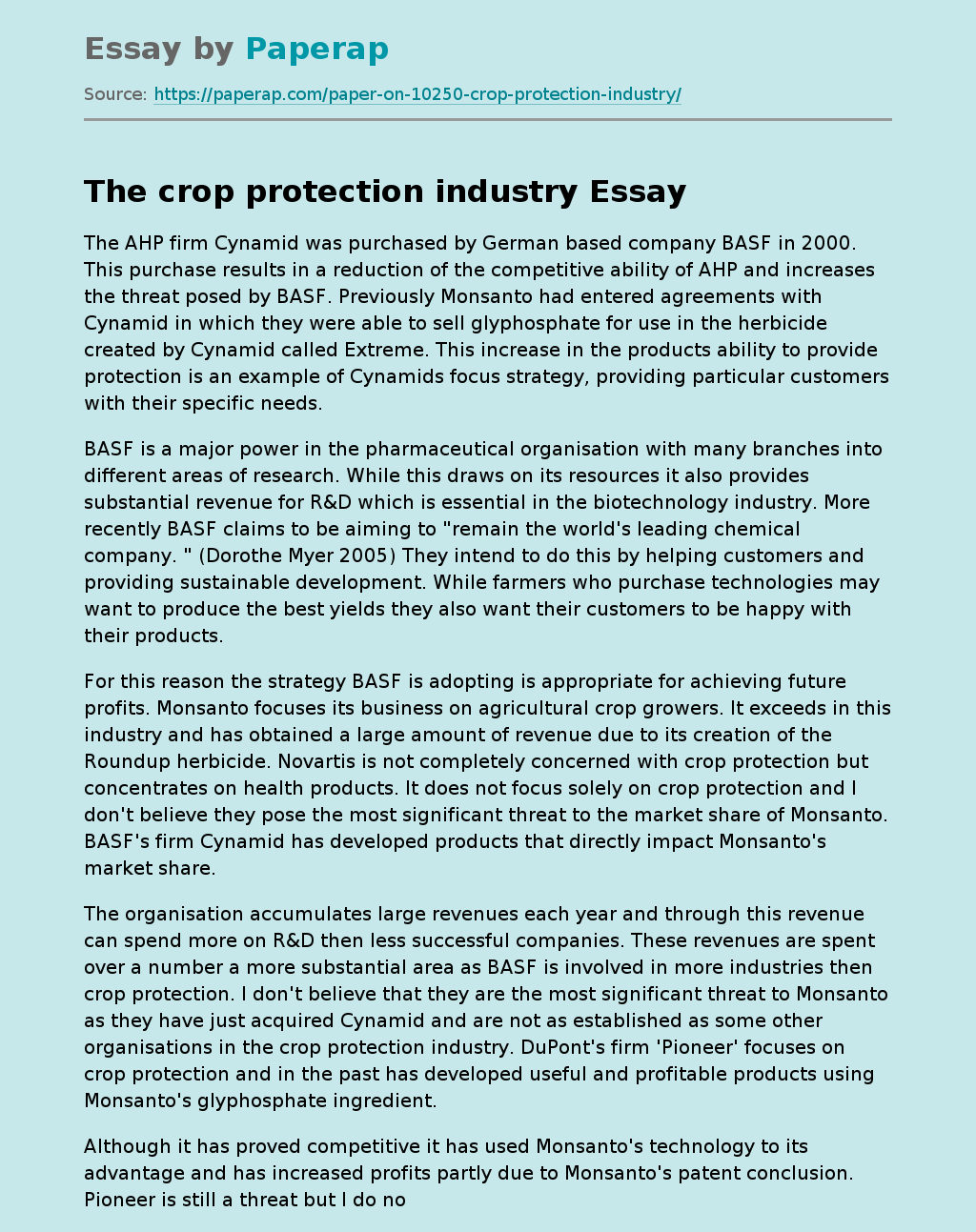The Crop Protection Industry
The AHP firm Cynamid was purchased by German based company BASF in 2000. This purchase results in a reduction of the competitive ability of AHP and increases the threat posed by BASF. Previously Monsanto had entered agreements with Cynamid in which they were able to sell glyphosphate for use in the herbicide created by Cynamid called Extreme. This increase in the products ability to provide protection is an example of Cynamids focus strategy, providing particular customers with their specific needs.
BASF is a major power in the pharmaceutical organisation with many branches into different areas of research.
While this draws on its resources it also provides substantial revenue for R&D which is essential in the biotechnology industry. More recently BASF claims to be aiming to “remain the world’s leading chemical company. ” (Dorothe Myer 2005) They intend to do this by helping customers and providing sustainable development. While farmers who purchase technologies may want to produce the best yields they also want their customers to be happy with their products.
For this reason the strategy BASF is adopting is appropriate for achieving future profits. Monsanto focuses its business on agricultural crop growers. It exceeds in this industry and has obtained a large amount of revenue due to its creation of the Roundup herbicide. Novartis is not completely concerned with crop protection but concentrates on health products. It does not focus solely on crop protection and I don’t believe they pose the most significant threat to the market share of Monsanto.
BASF’s firm Cynamid has developed products that directly impact Monsanto’s market share.
The organisation accumulates large revenues each year and through this revenue can spend more on R&D then less successful companies. These revenues are spent over a number a more substantial area as BASF is involved in more industries then crop protection. I don’t believe that they are the most significant threat to Monsanto as they have just acquired Cynamid and are not as established as some other organisations in the crop protection industry. DuPont’s firm ‘Pioneer’ focuses on crop protection and in the past has developed useful and profitable products using Monsanto’s glyphosphate ingredient.
Although it has proved competitive it has used Monsanto’s technology to its advantage and has increased profits partly due to Monsanto’s patent conclusion. Pioneer is still a threat but I do not believe it is as much a threat as the established Syngenta organisation. Syngenta is another competitor of Monsanto that focuses solely on crop protection. It is a greater threat to Monsanto as it has worldwide operations with high revenues and continually innovative products. Syngenta had sales in 2004 equal to “approximately US$7. 3 billion.
It has also been granted recent court ruling that allow it to enter markets and compete with Monsanto. (Corey Gillam 2004) Syngenta is also responsible for releasing a new combination product called ‘LOMAX’ which provides “season long control of broadleaf weeds and grasses. ” (Syngenta2005) I believe Syngenta has the resources to create innovative products and threaten any thoughts of a monopoly by Monsanto. It is a well established organization with the revenue and technology to expand in the crop protection industry.
The Crop Protection Industry. (2017, Dec 07). Retrieved from https://paperap.com/paper-on-10250-crop-protection-industry/

